Every day I am treated to another tweet or Facebook post proclaiming that the latest restaurant to open here in Houston is the “best in the city” or “to die for”. (I know no one who has been to each and every restaurant in Houston, so I am confident that anyone proclaiming “best” as applied to a restaurant is at best engaging in hyperbole, and at worst being naive.)
In the past month or so alone I have read at least 40 brief or not-so-brief accolades about Pax Americana and Museum Park Cafe, and while I understand that it is natural to wish nothing but success to restaurant teams opening new places, I often wonder if such glowing reviews about service and dishes/menu items do not serve detrimental purposes. If so many people are telling you that you are “awesome” and “amazing” and “perfect” you would be forgiven by most for believing that all is indeed perfect. But in my experience that is rarely the case, especially if your restaurant opened for full service the very week those accolades came streaming in. Too often I have wanted to believe that so many people cannot be wrong, only to take a seat at the “restaurant cooking the best food in Houston right now” and be, at best, disappointed with the food or service or, lamentably, both. (And I firmly state that both are necessary for a restaurant to be lauded as “awesome”.)
Take, for example, my experience this week. Ms. V – with whom I dine often, and whose palate I trust – invited me to Museum Park Cafe for dinner. The week before, she had dined there and liked the food. I accepted her kind offer and we drove to the Museum District about 7 o’clock, planning to enjoy some wine at the bar and check out the service.
I like the interior space. It is likely that the restaurant was designed to resemble a cafe or restaurant in a museum; in any event, it does. And the look works. Pale walls, art on one large wall, some wine bottles in modern racks toward the rear of the dining room, simple tables, no linens on them. Ms V and I ordered a Banshee Pinot Noir, and it was good. But the pouring of the wine is where the “awesomeness” began to suffer. The young man behind the bar, who told us he was the bartender, eager to take us off the hands of the waiter who escorted us to the bar and was doing a fine job, opened the bottle and hastily poured at least 6 ounces into Ms. V’s glass, evidently not wanting to let us approve of the wine. My dining companion firmly but politely told him “I want to taste it first.” He looked surprised, but allowed his guest to do just that. She liked the wine, as did I, and we continued discussing the Houston restaurant scene and mushroom hunting and the beauty of Alsace.
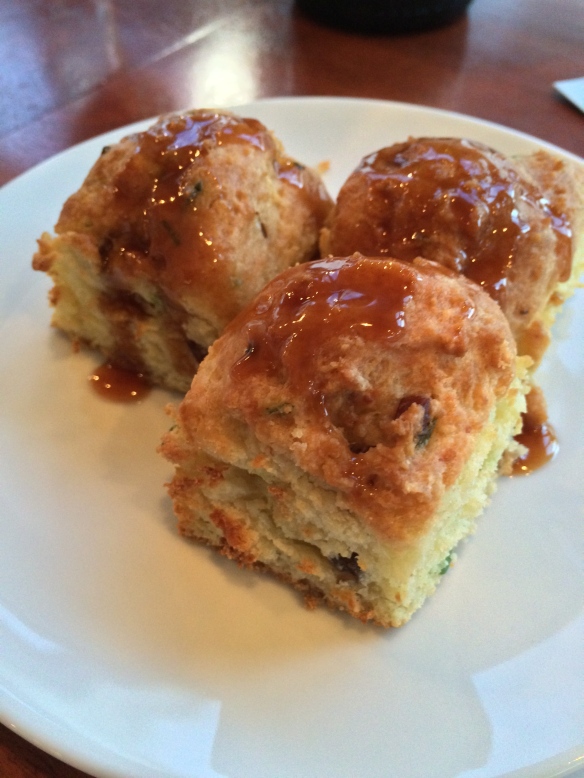
Biscuits at the bar turned out to be a pleasant experience.
We were both a bit hungry, so Ms. V ordered (as written on the menu) Cheddar & Scallion Biscuits salumi caramel, a side dish that turned out to be, excepting the dessert, the best taste of the evening. The biscuits were warm, and light yet rich, the pork imparting a good touch of saltiness and the drizzled caramel providing a good mouthfeel and deep tone.
After we had our fill of the biscuits we decided to move to a table and order. We told the bartender that we would like to continue our meal in the dining room proper and he responded by saying “You’ll have to cash out first.” We responded by asking if it was possible for us to transfer the wine bill to our table, and politely requested that he ask the manager. He walked away and returned within 30 seconds, the check for the bottle in a tray, which he placed in front of us, all the while mute as a sleeping panda bear. Had he asked his manager? We never found out. Ms. V paid the bill and we proceeded to get down off of the high stools and make our way to a table. As our feet reached the floor bartender asked, nonchalantly, “Do you want me to take your bottle and glasses to your table?” I looked at Ms. V, on whose face was a fairly tight grimace. I knew what she was thinking, because I was thinking the same thing: What kind of service training did this bartender undergo? Who failed to teach him the basics? This was far from “awesome”. I picked up the two glasses and Ms. V handled the bottle and we took our seats.
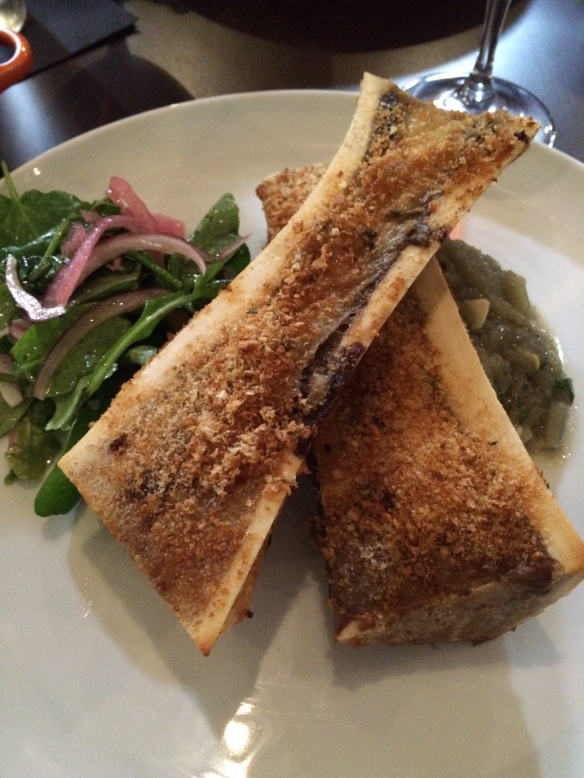
Bone marrow, salad of parsley, dill, and onions (among other things) and some fairly useless shallot confit.
Do not misunderstand me, for I mean no disrespect to the bartender. I am willing to understand and accept that he is more than likely a perfectly fine person. Yes, his attitude and behavior made our meal less than it could have been, but that did not make him a failure in our eyes. (I will also readily admit that Ms. V and I notice things in restaurants that many others seem not to. That does not make others unobservant, nor does it make us snobs. If one works in a good restaurant and does not notice things such as these one is not doing one’s job properly.)
We continued with our wine, and ordered more food. Let me state here that I am well aware that Museum Park Cafe is newly opened, and that kinks are surely being ironed out in the kitchen. I want this restaurant to succeed, because I can tell already that its approach and aesthetic are a welcome addition to the Houston restaurant world. My thoughts on our dishes are tempered by that newness. I will return, and I think the food will have improved by then.
Ms. V chose Steak Tartare french dressing, preserved egg, herb salad, gribiche for her first course, and I opted for the Roasted Bone Marrow shallot confit, oxtail marmalade, brioche. Then she decided to proceed with Swordfish, while I went for the Atlantic Scallops pork belly, corn pudding, charred onions, chanterelle.
Someone I know lauded the bone marrow at Museum Park Cafe, so I ordered it. Marrow is, as well, one of my favorite things; I have enjoyed great renditions of it at St. John in London and Le Pigeon in Portland. I was disappointed in this dish. The marrow was lacking that gelatinous look and reality that makes the food so good. The bread crumb topping was thin and bland, and not needed. Salt was also lacking, so I asked for some and sprinkled it liberally over the bones. It helped, but could not totally redeem things. On the other hand, the salad on the plate: onions, parsley, cilantro, dill. It was a great thing, the best element there. (I will not say much about the shallot confit. To my palate, it was best left off of the plate. No acid, mushy, almost as if it was meant to be food for babes.)
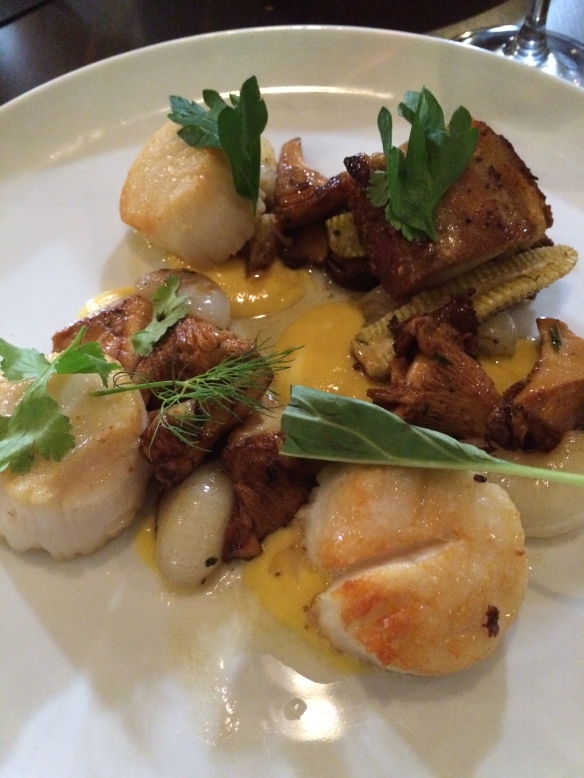
Fresh Atlantic scallops, seared unevenly, but promising. And the dill did not work.
The tartare was very good. Whoever prepared it did so with great technique. Uniform pieces of meat, sauce mixed well, and the salad that accompanied the tartare was balanced and crisp. To the swordfish: I took a bite and immediately thought “sausage”. In fact, the dish reminded me of choucroute, which is not a bad thing at all. But if one wanted echt, proper swordfish, this dish was not for them. What seemed to be leeks in a sauce accompanied the steak. Something approaching a crust was seared on the steak, a crust that stated loudly: sausage.
My scallops were fine. The dish was plated in an attractive manner, the scallops were handled with care, and the corn pudding – if that is what it was – was tasty. I did not taste corn, and did not see corn. I wrote that the scallops were handled well, and by that I mean they were seasoned properly and not overcooked. However, they were cooked inconsistently; a portion of one had a good sear, while the remainder of the scallops were lacking the taste and feel that good searing imparts. And I would recommend no dill be put on the plate. Finally, the chanterelles, those glorious mushrooms, were soggy. I don’t know if they had been seared first, if they had been waterlogged when they were cleaned, but I thought it a shame to prepare chanterelles in that manner.
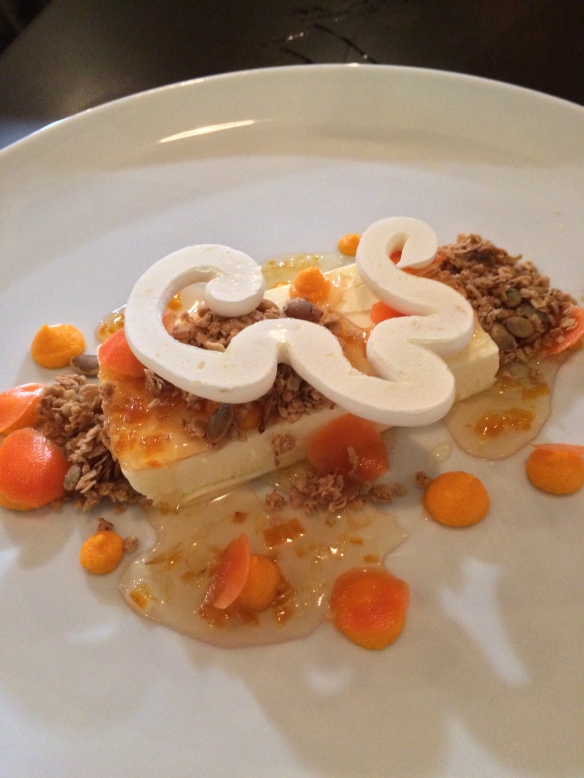
Honey. Semifreddo. No need for anything else. A perfect dessert.
Dessert was all that remained. And it was good, and attractive. In fact, I say that it approached perfection. Textures, the right level of sweetness. All there. Semifreddo, a meringue, some pumpkin. It was something that no one would quibble with, and if it is on the menu when I return to Museum Park Cafe it will be ordered.
Now, about that bartender. I have it on record from a well-placed source that Museum Park Cafe is serious about service. I am confident that the young man’s approach to his job will be 180 degrees different on my next visit. Museum Park Cafe, I am certain, wants to take its service to a top level, and it should, and then, with a few tweaks, it could be “awesome.” Unfortunately, this was my first time at the restaurant, and as we all know, first impressions mean a lot. I was seated with my back to the kitchen, which gave me a view of the bar, behind which throughout our meal the bartender stood leaning against the counter, cupping something – peanuts? – in his closed hand and regularly lifting his head back to deposit the snack into his mouth. It was not a pretty picture, and he kept it up for a good 30 minutes. (One, never lean against things in sight of guests. There is always work to be done in a restaurant. And two, I think it best to refrain from snacking in such an obvious manner, as if one is a cow chewing its cud. Yes, I told you already, I have had high standards drilled into me where service and behavior is concerned.) The two waiters we dealt with were performing their duties as they should have. It seems the young bartender is the outlier here.
Museum Park Cafe should be on your list of places to visit. Sit at the bar and have some wine. Order the tartare and brioche toast. Admire the design of the place. And let me know what you thought of the service.
Update: I dined one more time at Museum Park Cafe before it closed (the restaurant became a thing of the past in April 2015). I ordered the bone marrow again, and this time a marrow spoon was required, as the bones were very narrow. Alas, the restaurant had none. I turned my fork sideways and pulled out a bit of the marrow, tasted it, and pushed the plate away. Same bland bread crumbs, dry marrow, hardly any flavor.
Like this:
Like Loading...




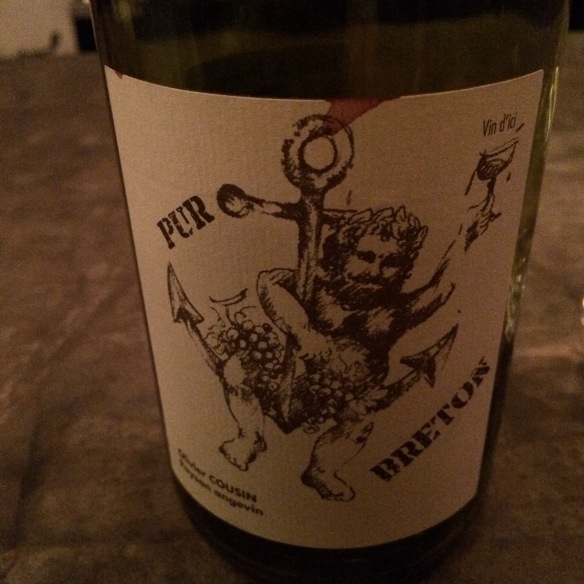
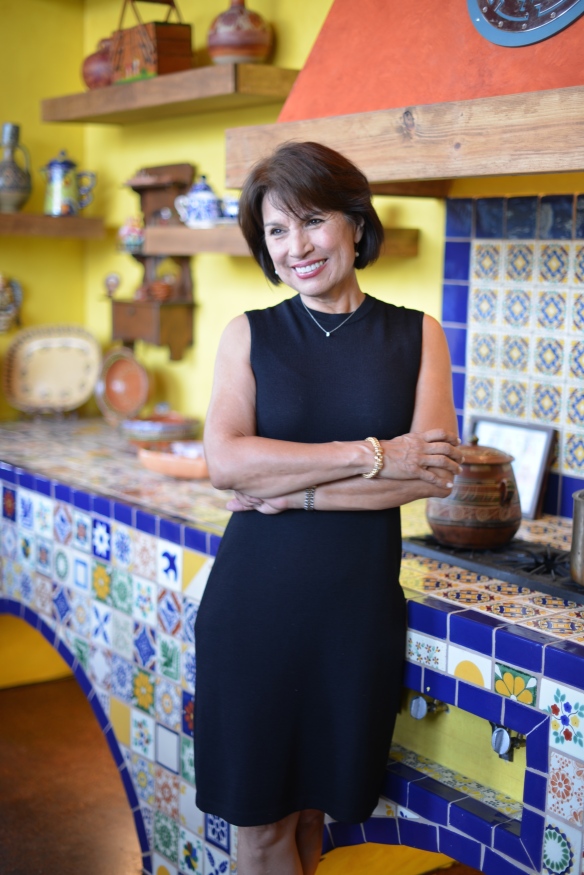
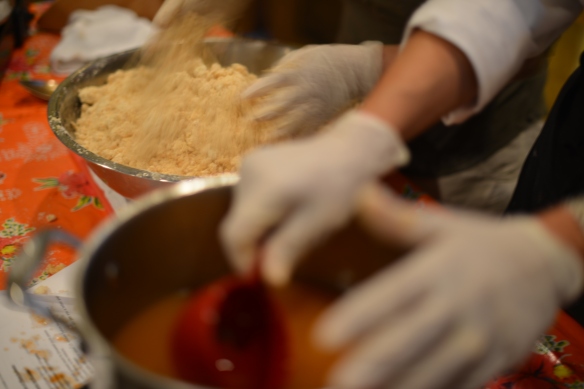

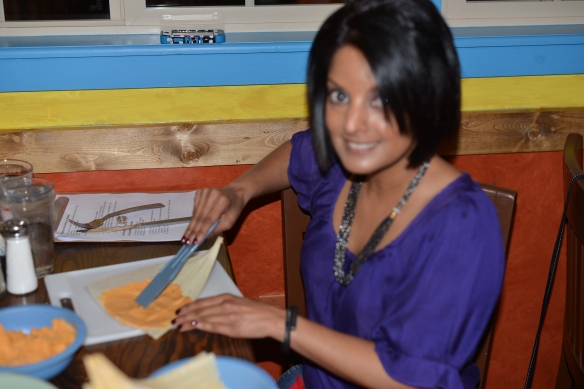
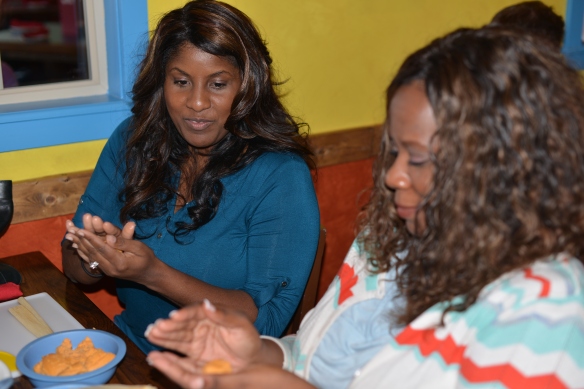


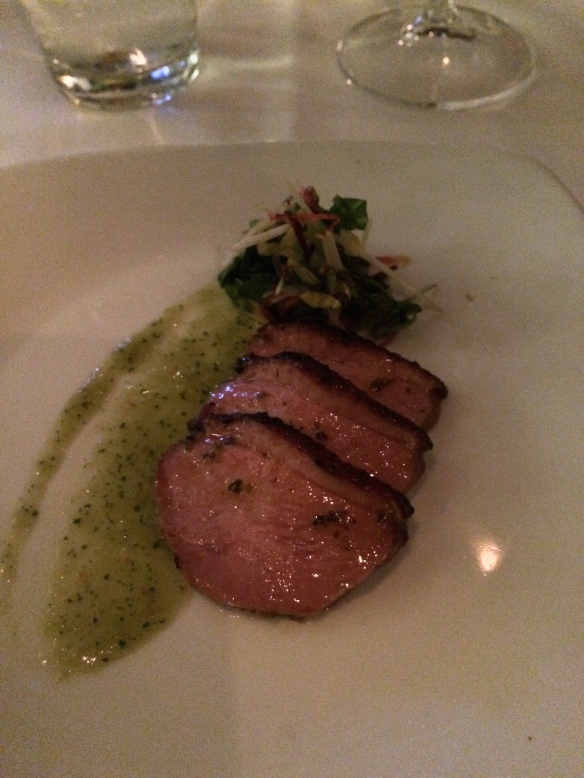
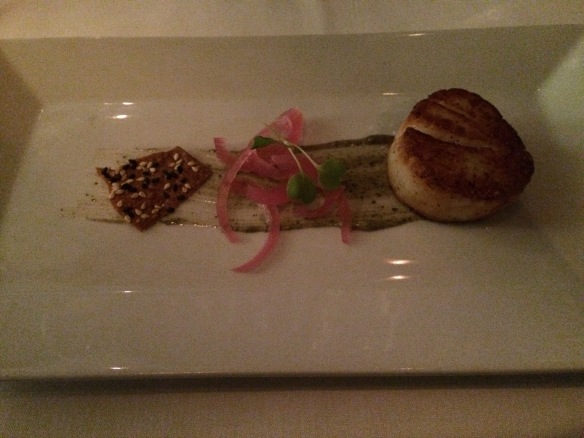


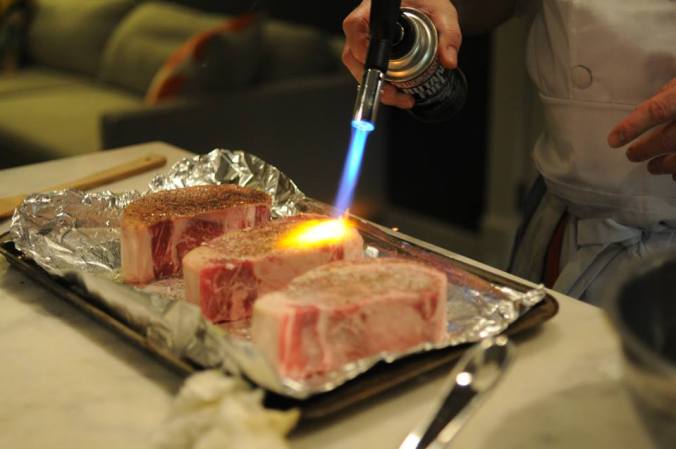


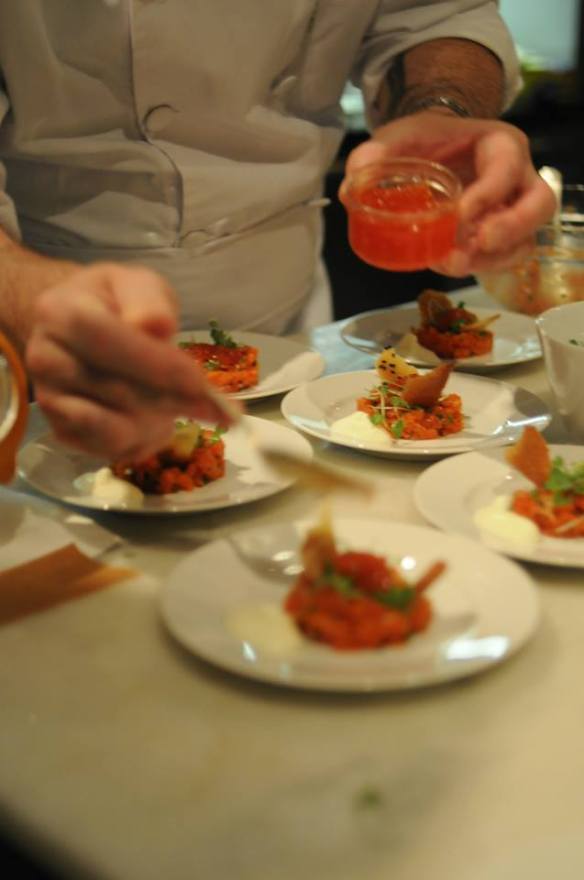







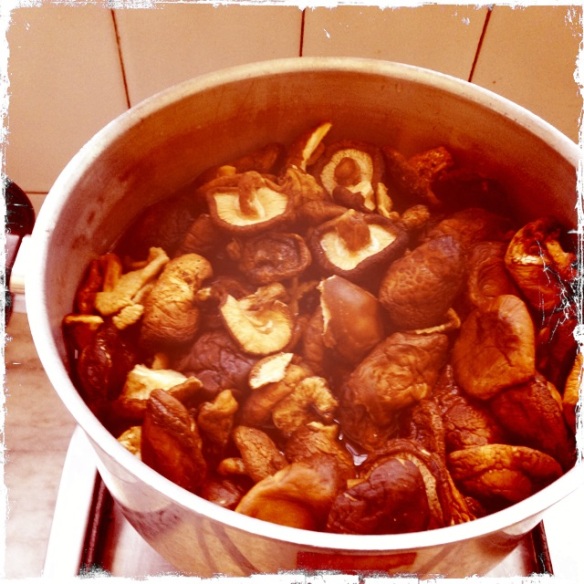
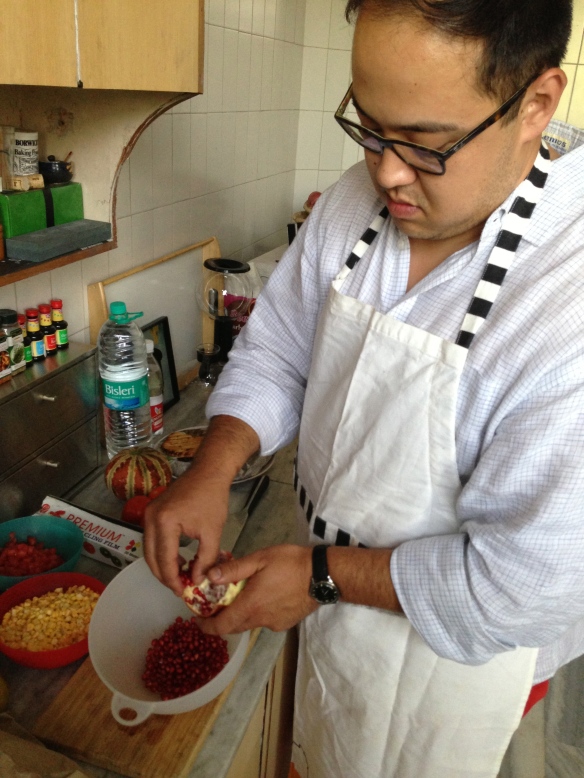
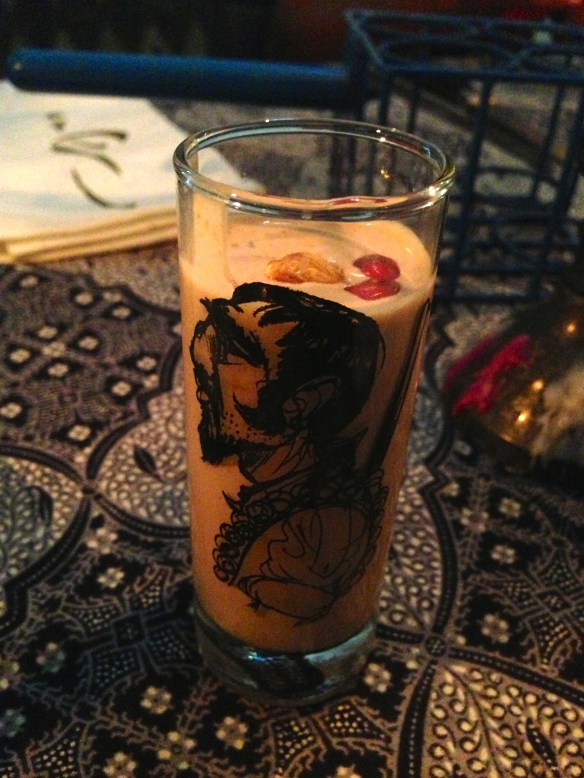
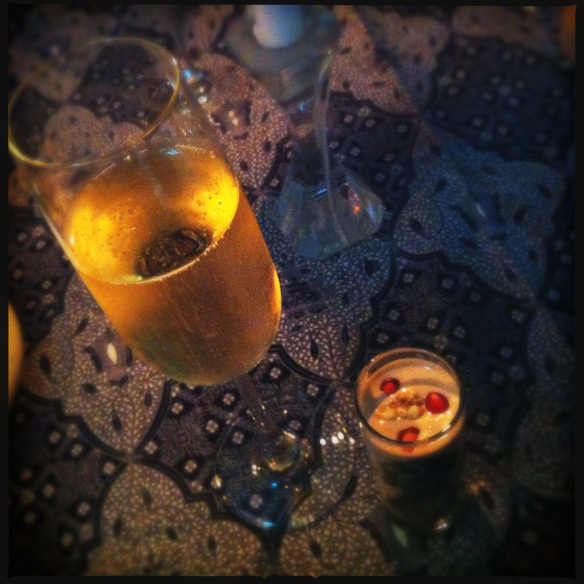
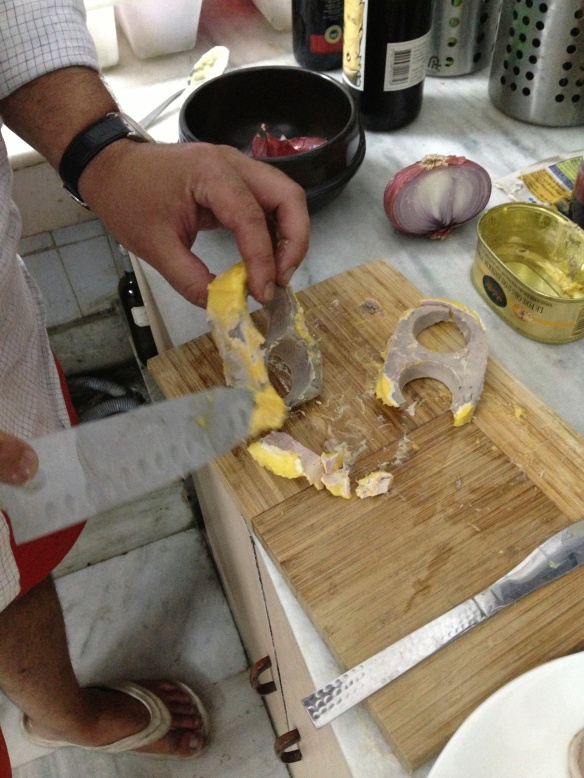
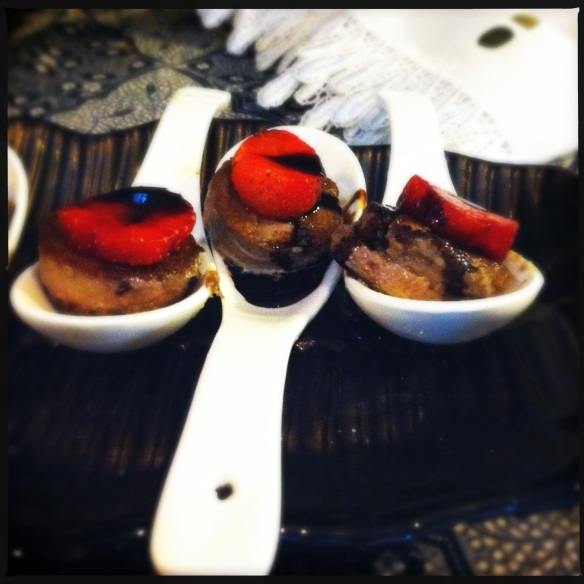
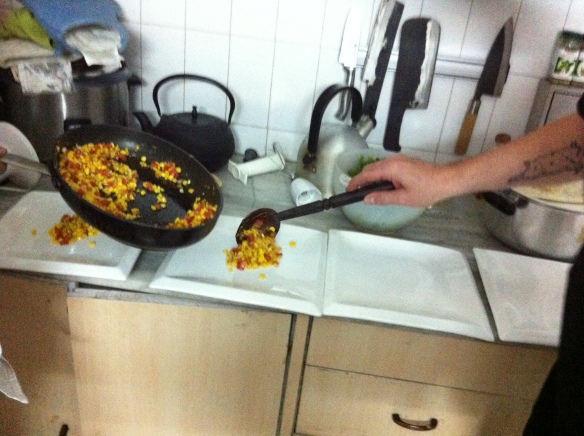
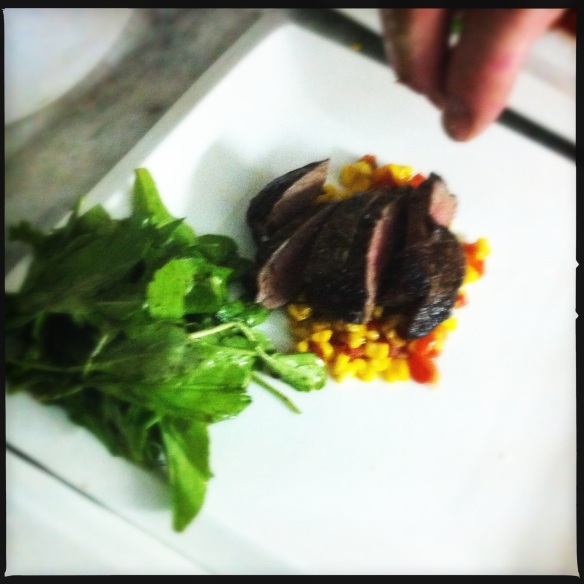

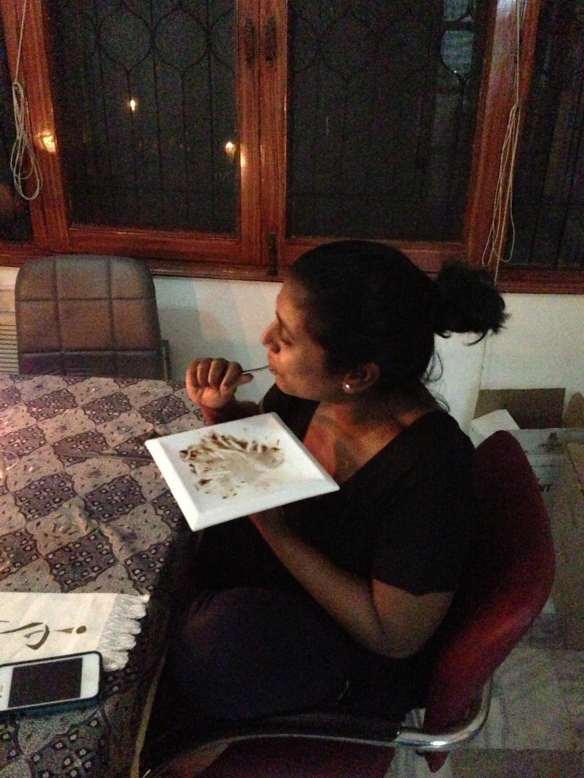

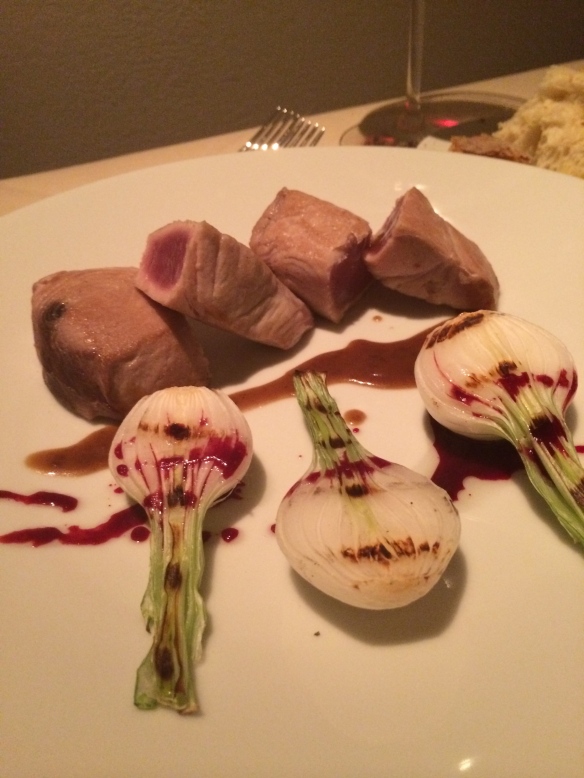
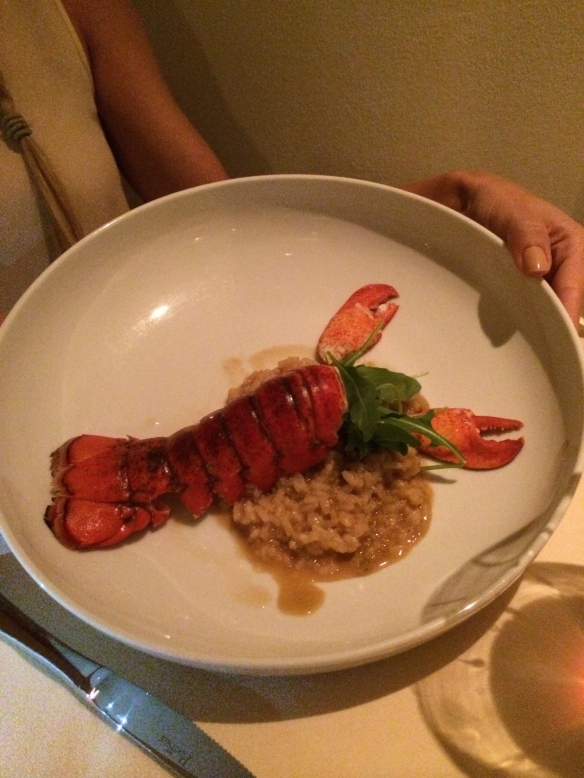
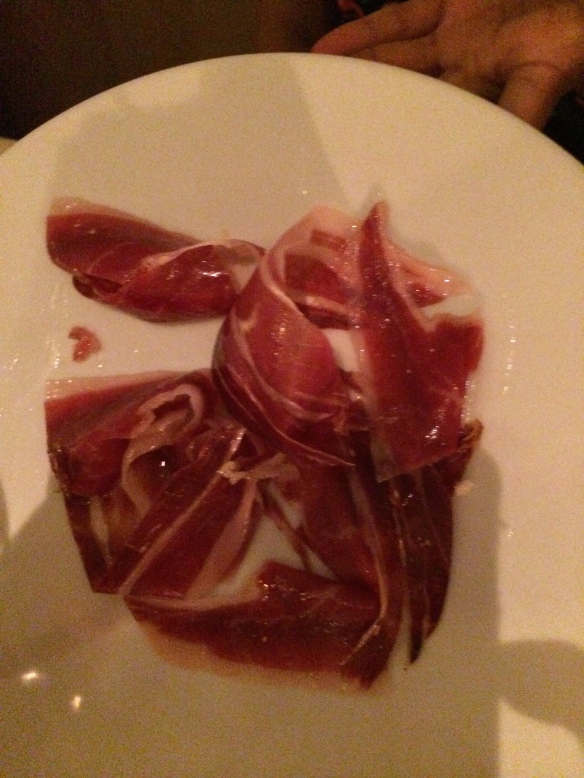
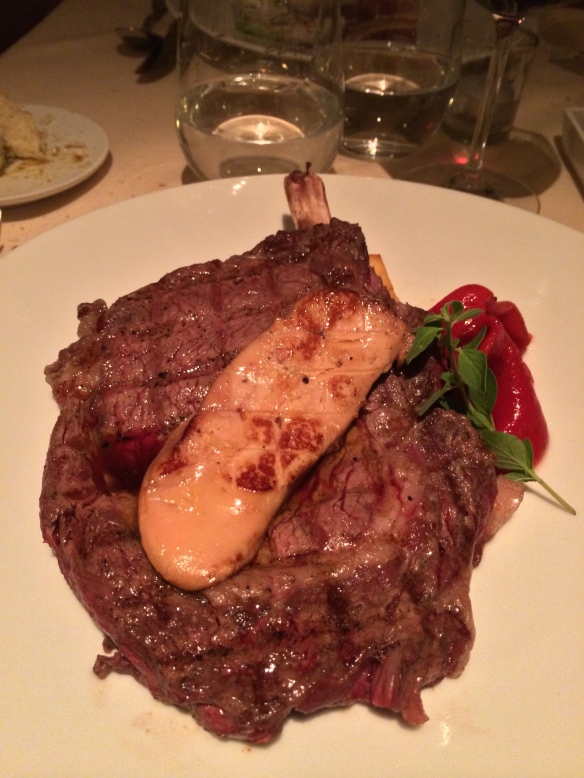
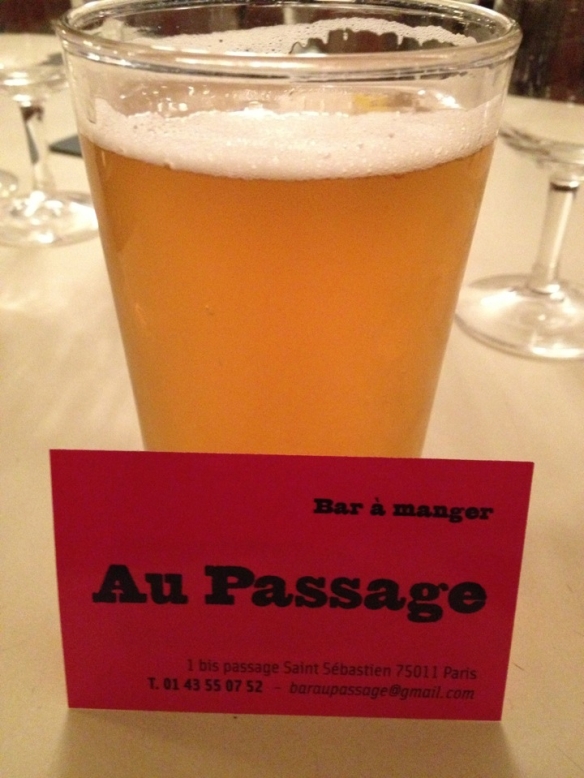
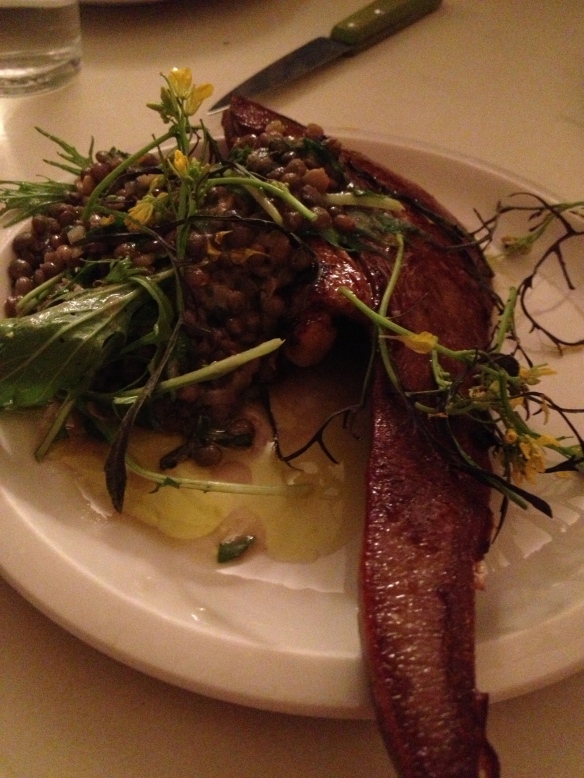
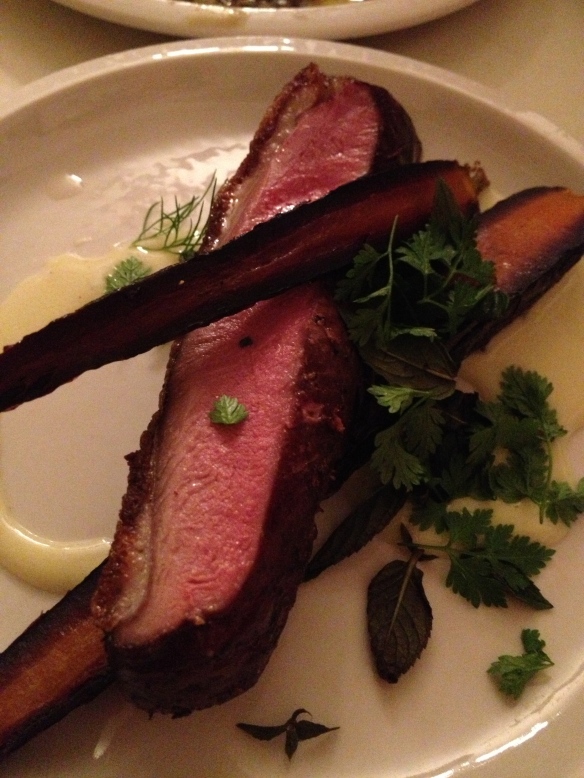
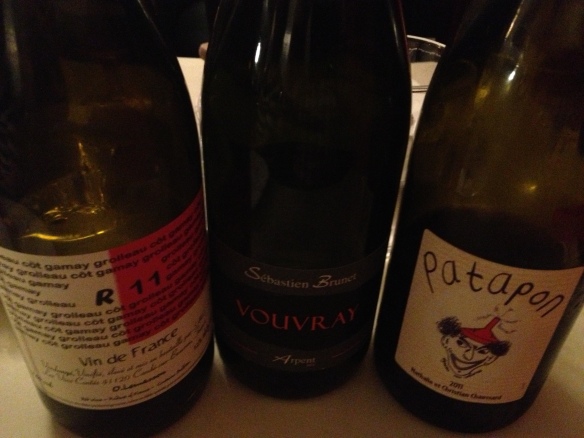



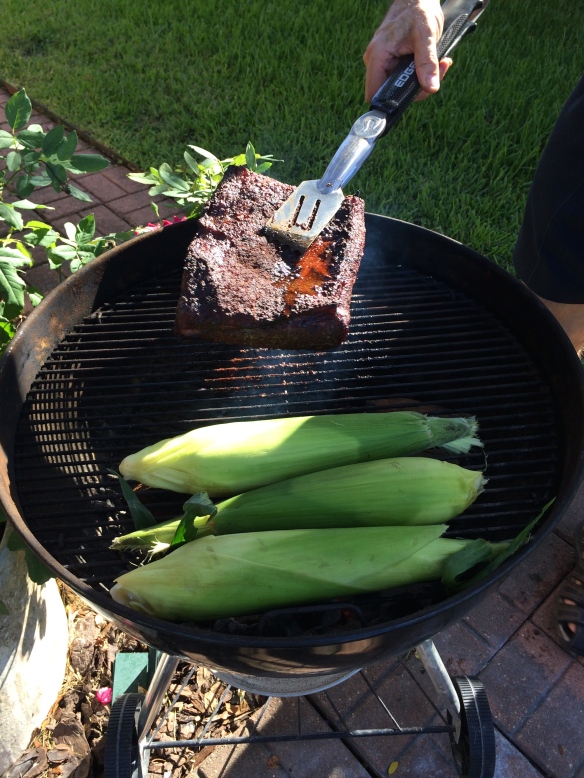
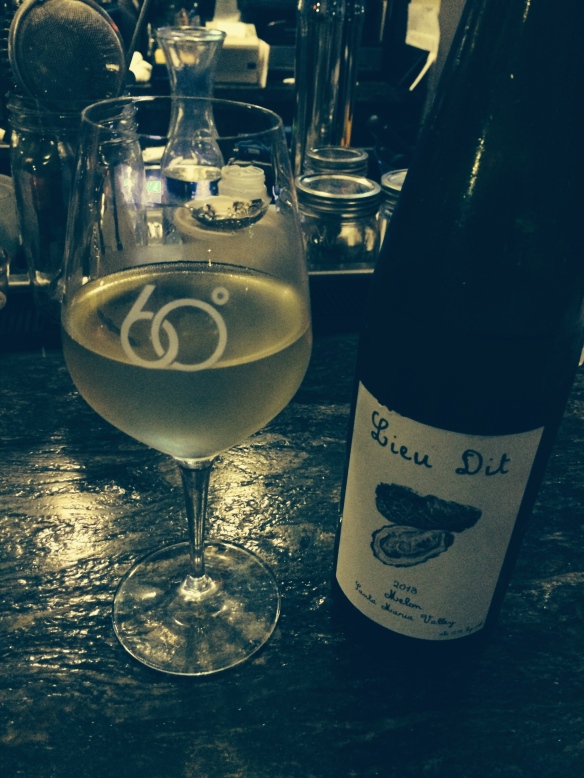


Recent Comments